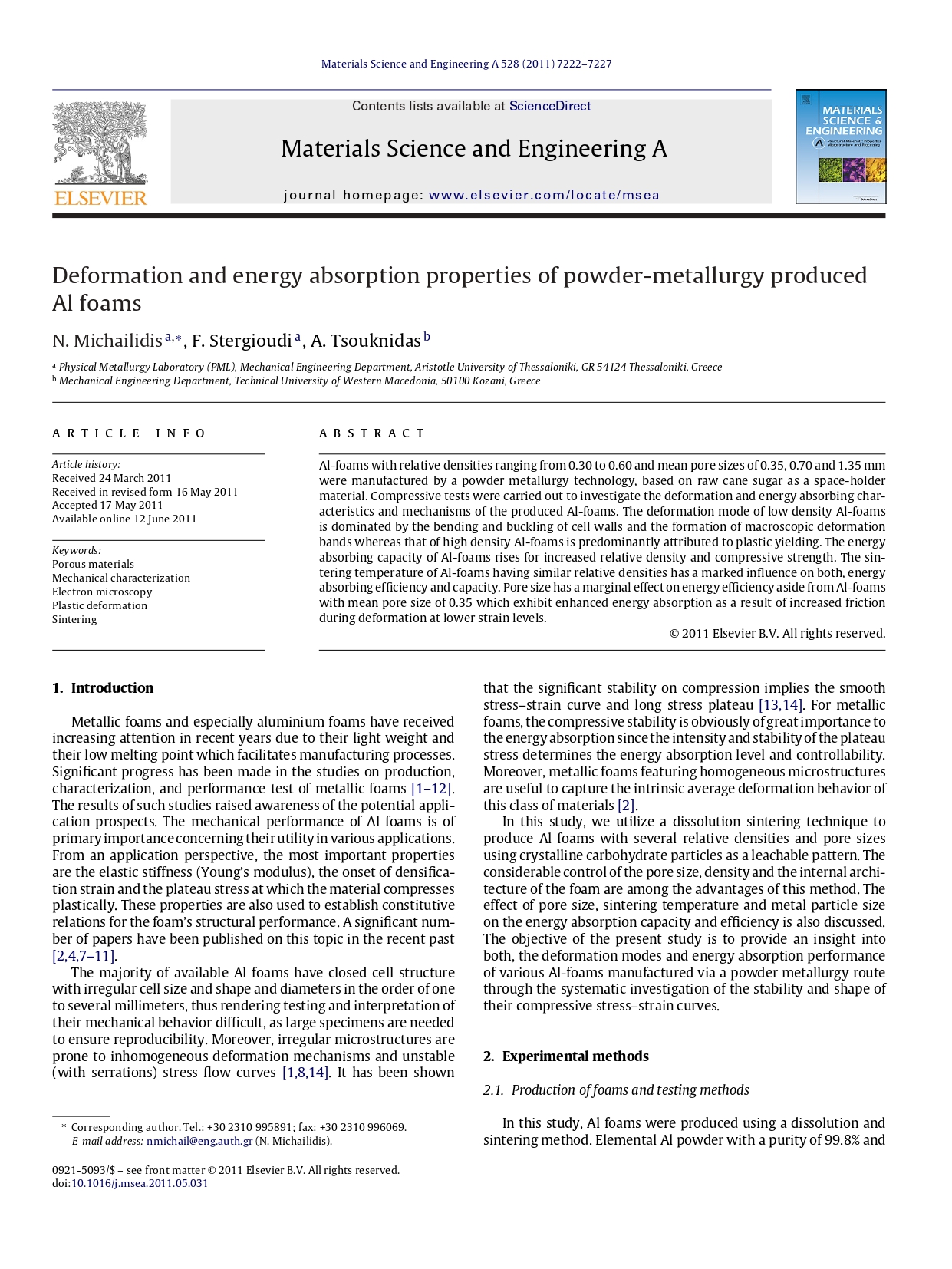Τitle
Deformation and energy absorption properties of powder-metallurgy produced Al foams
Deformation and energy absorption properties of powder-metallurgy produced Al foams
Materials Science and Engineering A, 528 (24), pp. 7222-7227.
Al-foams with relative densities ranging from 0.30 to 0.60 and mean pore sizes of 0.35, 0.70 and 1.35 mm
were manufactured by a powder metallurgy technology, based on raw cane sugar as a space-holder
material. Compressive tests were carried out to investigate the deformation and energy absorbing characteristics
and mechanisms of the produced Al-foams. The deformation mode of low density Al-foams
is dominated by the bending and buckling of cell walls and the formation of macroscopic deformation
bands whereas that of high density Al-foams is predominantly attributed to plastic yielding. The energy
absorbing capacity of Al-foams rises for increased relative density and compressive strength. The sintering
temperature of Al-foams having similar relative densities has a marked influence on both, energy
absorbing efficiency and capacity. Pore size has a marginal effect on energy efficiency aside from Al-foams
with mean pore size of 0.35 which exhibit enhanced energy absorption as a result of increased friction
during deformation at lower strain levels.
